Antique Tools Your Great-Grandparents Used That We All May Need Again Someday
My great-grandfather was a logger in Michigan in the 1890s. He was a
high-rigger — the guys who would climb to the top of a tall pine and top
it, and then attach rigging and pulleys to allow timber to be dragged
by mule teams to a stacking area from the forest below.
I have many of his old tools, and the home he built in Michigan from the ground up is now our family vacation home. It’s been renovated quite a bit, and is very much a self-sufficient environment, but what amazes me about the house is the construction. He built it entirely with hand tools and the help of friends and neighbors in the community. Collectively, they brought various equipment, skills and tools together to help him build his house.
What’s significant about its construction is that it was built entirely from oak and maple. That may sound noble and high quality, but in actual fact it was a nightmare.
Pine is the lumber material of choice for most building construction. It’s strong and durable, but also has a softer profile as a wood and allows for nails to be driven without splitting. If you drive a nail, and especially if you toe-nail a nail into oak or maple, it splits. The pine trees were gone from Michigan at that time. They were harvested aggressively, and the state was essentially flattened to rebuild Chicago after the great Chicago fire. Oak and maple were the only trees that remained. As a result, he had to use hand drills to drill pilot holes into every piece of wood where he would eventually drive one of the hand-forged nails he made on his anvil.
As I’ve renovated the house, I’ll come across some of these joints in the walls and always stop with a bit of reverence and appreciation for how hard he must have worked to craft this house.
Discover More Than 1122 Tips, Tricks And Secrets For A Healthier, Safer, Lower Cost, More Self-Reliant Life!
Most all of my renovations were done with power tools and the convenient inventory of hardware and lumber from various lumber yards and hardware stores. My great-grandfather did it the old-fashioned way, and I was determined to assemble, understand and learn these traditional methods. However, I must confess that while I used some of his old tools for my renovations, I used power tools the most. Someday that might not be possible.
Our electric grid is dangerously vulnerable. It’s estimated that the infrastructure is decades out-of-date and desperately in need of a major overhaul. It’s unlikely that will happen anytime soon. To make matters worse, this vulnerability increases the likelihood of a massive grid failure from things as complex as a solar storm to a squirrel chewing on a wire in the wrong place at the wrong time.
Maybe it’s time to revisit those hand tools my great-grandfather mastered and used. How do we maintain and sustain the ability to function on a mechanical level when we are so dependent on electrical power? Well, here are a few suggestions:
1. Horsepower
This could also be mule power, but draft animals will be critical once again for many things we assume machines will do. And yes, you can argue for gas-powered vehicles and tools, but refineries require significant amounts of electrical power and a robust economy. We would all run out of gas soon after the grid fails.
Horsepower applies to various activities, from transportation of people either individually in a wagon or a sleigh in winter.
Horses and mules also haul materials, pull plows to furrow and harvest crops, and offer a relative amount of speed to transportation of communication. The pony express is the benchmark for that idea.
2. Lumber, timber and woodworking
My great-grandfather is a great example for this area. He used bucksaws and backsaws to cut timber and do finish-cuts on milled woods.
Some of the bucksaws used to cut timber were two-man saws, while others were a single set. All of them featured large saw teeth that needed to be aligned and sharpened on a regular basis.
Backsaws had a finer cut on the saw teeth and used a turnbuckle, rope or wire that was twisted at the top of the saw to tighten the saw blade into the saw frame.
There were also handrills for not only boring small holes for nails, but large holes for the insertion of legs and joints for larger construction. Some handrills had a feature that allowed someone to press the drill against their chest to drive deep into hardwoods or for larger drill bits.
Other woodworking tools I’ve come to appreciate include large corkscrew drills for furniture making and timber-frame construction, and planes, clamps, levels and squares. All of them areused to align, design, and frame the construction of everything from houses to furniture.
There were also axes that had specialized uses from chopping wood to actually finishing timber. One example is the broad-head axe which was used to shave the sides of a log to create large timbers.
3. Water
Most municipal water is pumped into large water towers. Many homes depend on electric well pumps. All rely on electricity. Old-world alternatives are worth considering.
One is the hand powered well pump. You physically have to pump the handle to pull the water from the ground, but once it starts flowing buckets are easily filled.
An alternative is the windmill powered hand pump. In this instance a gear mechanism and attachment allows the windmill to do the work and fill a large tub that is then directed to various watering points from livestock to kitchen.
Ram pumps are another alternative for water pumping. They use the flow of water to power the pump and drive water through a pipe up significant inclines to deliver a steady flow of water. This water is usually collected in a tank or tub and distributed to the house and livestock pens in various ways.
Quite often, there was a large barrel or cistern in the basement underneath the kitchen. This stored water was then pumped up into the kitchen sink with a small, kitchen hand pump over the sink.
Another common fixture in any kitchen was the wood-fired cook stove. This provided heat for the home in the winter, heat to boil water or cook on the stovetop, and an oven for baking.
Quite often, a separate building was constructed to hold a second cook stove and served as a summer kitchen. Due to the high heat that any cook stove kicks out, a summer kitchen away from the main house kept for a cooler home in the summer.
Another common tool in any kitchen was the butter churn. Cream skimmed from milk was place into the churn and the bottom of the churn was sometimes placed into a tub of cold water. As the handle was pulled up and down the fat in the cream would clot and clump with the aid of the cold temperature and eventually butter would result.
4. Farming
What has traditionally defined civilization is the ability to develop a robust, agricultural heritage. Farming on both a large level and smaller level is going to become a significant challenge for everyone if the grid goes down. Grocery stores could become a thing of the past and farmer’s markets the only choice for the future.
But before you go to the farmer’s market to buy or sell your harvest, you’ll need some old equipment.
This gets back to horsepower, and the ability of a horse to pull a plow to till soil and bring in a harvest on a large scale.
Horses also provide a valuable commodity for any farming effort: manure. Horse manure and the manure from cattle, when properly composted, is one of the best natural fertilizers you can use.
But horses can’t do it all when it comes to harvesting. Vegetables can be picked and so can fruit, but grains like wheat and barley must be cut. There were threshers that were horse drawn but they were expensive and used mostly for large-scale farms. The traditional method was with a long bladed tool called a scythe.
Scythes and smaller variations cut grasses like wheat and barley with a sweeping motion. Often, rye grasses were also harvested and all of the grasses were baled into hay bales to feed the horses and the cattle. This was stored in the barn for the winter and occupied a significant amount of space.
Across all of this was a mindset determined to build and create using hand tools, horsepower and physical exertion. It extended from the construction of homes and barns to furniture building and everyday repairs.
It also was a critical consideration for local towns as they worked to provide basic transportation, water supplies, and the horsepower to drive commerce.
What’s interesting is that many of these tools can be purchases at antique stores and flea markets. They’re usually sold as curiosities to be displayed on a wall in a den or a finished basement, and are typically not that expensive. I snap them up whenever I see them. The day may come when they’ll come of the walls and back into the hands of the people who genuinely need them.
What tools did your ancestors use that we may need again? Share your suggestions in the section below:
Are You Off-Grid? Then Harness The Power Of Nature’s Most Remarkable Healer: Vinegar
I have many of his old tools, and the home he built in Michigan from the ground up is now our family vacation home. It’s been renovated quite a bit, and is very much a self-sufficient environment, but what amazes me about the house is the construction. He built it entirely with hand tools and the help of friends and neighbors in the community. Collectively, they brought various equipment, skills and tools together to help him build his house.
What’s significant about its construction is that it was built entirely from oak and maple. That may sound noble and high quality, but in actual fact it was a nightmare.
Pine is the lumber material of choice for most building construction. It’s strong and durable, but also has a softer profile as a wood and allows for nails to be driven without splitting. If you drive a nail, and especially if you toe-nail a nail into oak or maple, it splits. The pine trees were gone from Michigan at that time. They were harvested aggressively, and the state was essentially flattened to rebuild Chicago after the great Chicago fire. Oak and maple were the only trees that remained. As a result, he had to use hand drills to drill pilot holes into every piece of wood where he would eventually drive one of the hand-forged nails he made on his anvil.
As I’ve renovated the house, I’ll come across some of these joints in the walls and always stop with a bit of reverence and appreciation for how hard he must have worked to craft this house.
Discover More Than 1122 Tips, Tricks And Secrets For A Healthier, Safer, Lower Cost, More Self-Reliant Life!
Most all of my renovations were done with power tools and the convenient inventory of hardware and lumber from various lumber yards and hardware stores. My great-grandfather did it the old-fashioned way, and I was determined to assemble, understand and learn these traditional methods. However, I must confess that while I used some of his old tools for my renovations, I used power tools the most. Someday that might not be possible.
Our electric grid is dangerously vulnerable. It’s estimated that the infrastructure is decades out-of-date and desperately in need of a major overhaul. It’s unlikely that will happen anytime soon. To make matters worse, this vulnerability increases the likelihood of a massive grid failure from things as complex as a solar storm to a squirrel chewing on a wire in the wrong place at the wrong time.
Maybe it’s time to revisit those hand tools my great-grandfather mastered and used. How do we maintain and sustain the ability to function on a mechanical level when we are so dependent on electrical power? Well, here are a few suggestions:
1. Horsepower
This could also be mule power, but draft animals will be critical once again for many things we assume machines will do. And yes, you can argue for gas-powered vehicles and tools, but refineries require significant amounts of electrical power and a robust economy. We would all run out of gas soon after the grid fails.
Horsepower applies to various activities, from transportation of people either individually in a wagon or a sleigh in winter.
Horses and mules also haul materials, pull plows to furrow and harvest crops, and offer a relative amount of speed to transportation of communication. The pony express is the benchmark for that idea.
2. Lumber, timber and woodworking
My great-grandfather is a great example for this area. He used bucksaws and backsaws to cut timber and do finish-cuts on milled woods.
Some of the bucksaws used to cut timber were two-man saws, while others were a single set. All of them featured large saw teeth that needed to be aligned and sharpened on a regular basis.
Backsaws had a finer cut on the saw teeth and used a turnbuckle, rope or wire that was twisted at the top of the saw to tighten the saw blade into the saw frame.
There were also handrills for not only boring small holes for nails, but large holes for the insertion of legs and joints for larger construction. Some handrills had a feature that allowed someone to press the drill against their chest to drive deep into hardwoods or for larger drill bits.
Other woodworking tools I’ve come to appreciate include large corkscrew drills for furniture making and timber-frame construction, and planes, clamps, levels and squares. All of them areused to align, design, and frame the construction of everything from houses to furniture.
There were also axes that had specialized uses from chopping wood to actually finishing timber. One example is the broad-head axe which was used to shave the sides of a log to create large timbers.
3. Water
Most municipal water is pumped into large water towers. Many homes depend on electric well pumps. All rely on electricity. Old-world alternatives are worth considering.
One is the hand powered well pump. You physically have to pump the handle to pull the water from the ground, but once it starts flowing buckets are easily filled.
An alternative is the windmill powered hand pump. In this instance a gear mechanism and attachment allows the windmill to do the work and fill a large tub that is then directed to various watering points from livestock to kitchen.
Ram pumps are another alternative for water pumping. They use the flow of water to power the pump and drive water through a pipe up significant inclines to deliver a steady flow of water. This water is usually collected in a tank or tub and distributed to the house and livestock pens in various ways.
Quite often, there was a large barrel or cistern in the basement underneath the kitchen. This stored water was then pumped up into the kitchen sink with a small, kitchen hand pump over the sink.
Another common fixture in any kitchen was the wood-fired cook stove. This provided heat for the home in the winter, heat to boil water or cook on the stovetop, and an oven for baking.
Quite often, a separate building was constructed to hold a second cook stove and served as a summer kitchen. Due to the high heat that any cook stove kicks out, a summer kitchen away from the main house kept for a cooler home in the summer.
Another common tool in any kitchen was the butter churn. Cream skimmed from milk was place into the churn and the bottom of the churn was sometimes placed into a tub of cold water. As the handle was pulled up and down the fat in the cream would clot and clump with the aid of the cold temperature and eventually butter would result.
4. Farming
What has traditionally defined civilization is the ability to develop a robust, agricultural heritage. Farming on both a large level and smaller level is going to become a significant challenge for everyone if the grid goes down. Grocery stores could become a thing of the past and farmer’s markets the only choice for the future.
But before you go to the farmer’s market to buy or sell your harvest, you’ll need some old equipment.
This gets back to horsepower, and the ability of a horse to pull a plow to till soil and bring in a harvest on a large scale.
Horses also provide a valuable commodity for any farming effort: manure. Horse manure and the manure from cattle, when properly composted, is one of the best natural fertilizers you can use.
But horses can’t do it all when it comes to harvesting. Vegetables can be picked and so can fruit, but grains like wheat and barley must be cut. There were threshers that were horse drawn but they were expensive and used mostly for large-scale farms. The traditional method was with a long bladed tool called a scythe.
Scythes and smaller variations cut grasses like wheat and barley with a sweeping motion. Often, rye grasses were also harvested and all of the grasses were baled into hay bales to feed the horses and the cattle. This was stored in the barn for the winter and occupied a significant amount of space.
Across all of this was a mindset determined to build and create using hand tools, horsepower and physical exertion. It extended from the construction of homes and barns to furniture building and everyday repairs.
It also was a critical consideration for local towns as they worked to provide basic transportation, water supplies, and the horsepower to drive commerce.
What’s interesting is that many of these tools can be purchases at antique stores and flea markets. They’re usually sold as curiosities to be displayed on a wall in a den or a finished basement, and are typically not that expensive. I snap them up whenever I see them. The day may come when they’ll come of the walls and back into the hands of the people who genuinely need them.
What tools did your ancestors use that we may need again? Share your suggestions in the section below:
Are You Off-Grid? Then Harness The Power Of Nature’s Most Remarkable Healer: Vinegar
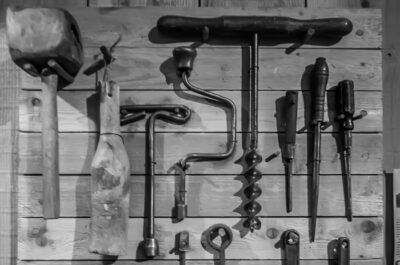
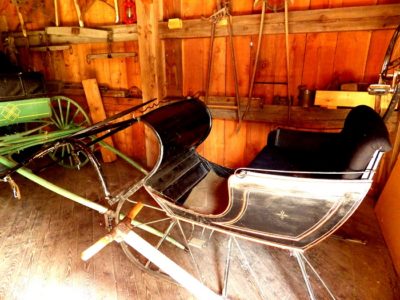
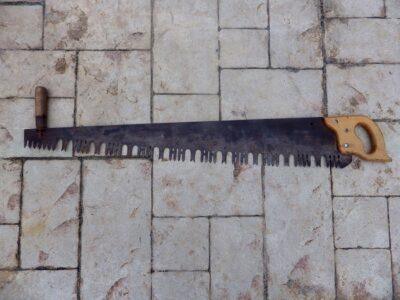
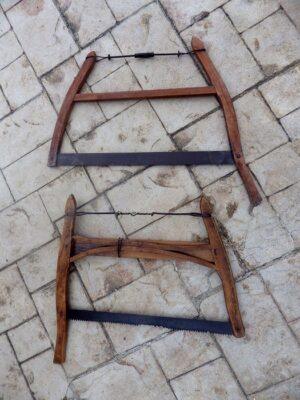
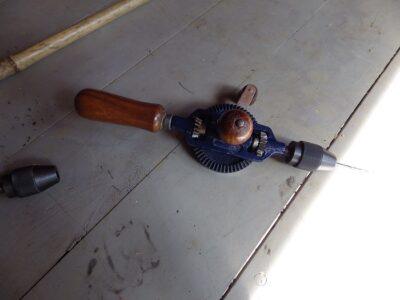
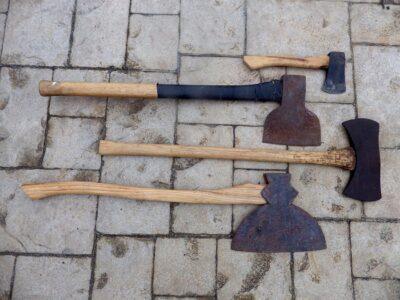
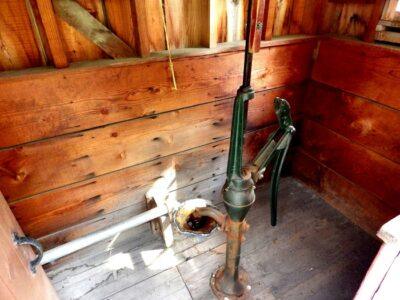
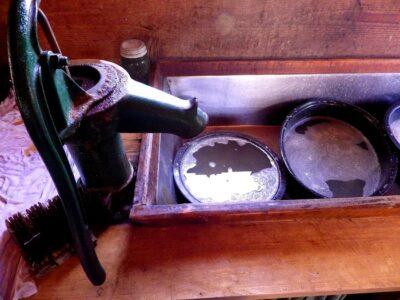
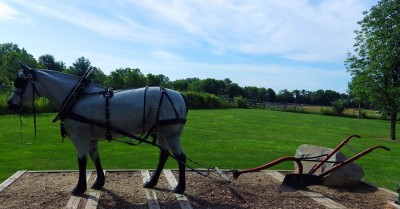
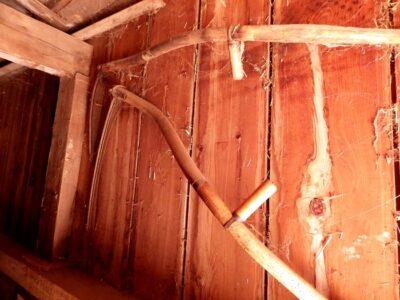



1 comment:
wash boards. I already have picked one up.
Post a Comment